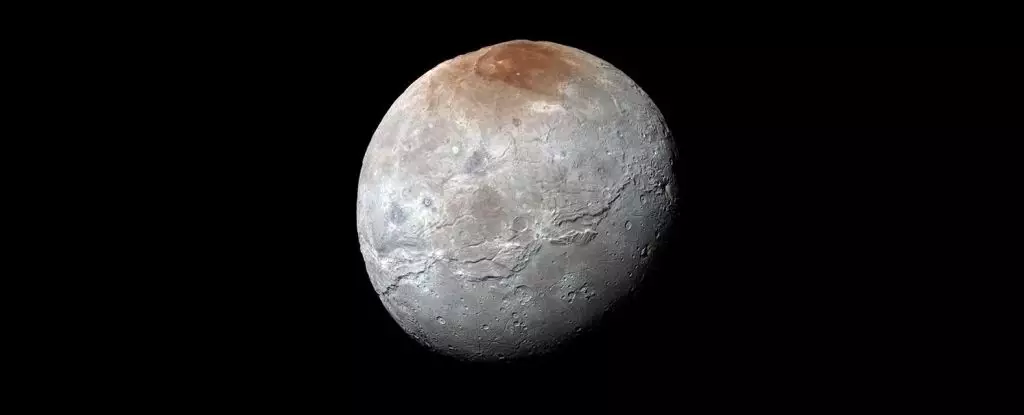The relationship between Pluto and its moon, Charon, is one steeped in mystery, but recent research has unveiled a compelling new theory about their origins. This notion challenges traditional ideas about celestial formations and offers a glimpse into the complexities of cosmic interactions. Understanding how these two bodies formed and evolved over billions of years reveals not only the intricacies of their relationship but also how such mechanisms can apply to broader planetary science.
For many years, the prevailing theory regarding the origins of Charon was that it formed as a result of a massive impact, similar to the widely accepted idea of Earth’s Moon coming into existence. However, recent findings propose a different scenario dubbed “kiss and capture.” According to Adeene Denton, a planetary scientist from the University of Arizona, this model suggests that Pluto and Charon initially collided, resulting in a brief period of coalescence before later separating while maintaining a gravitational bond. This innovative perspective reframes our understanding of how moons might form and evolve, particularly in the cold and rocky conditions that characterize the distant regions of our Solar System.
This revised model posits that instead of a mere “hit and run” or a destructive merging common in other planetary formation scenarios, Pluto and Charon experienced a gentler interaction. The temporary sticking together of these celestial bodies provides a fascinating insight into their stable, long-term relationship that is currently observed. This interaction raises questions about the nature of collisions in space, highlighting a unique method of forming systems through a less violent process.
A critical aspect of this new paradigm is the distinctive characteristics of both Pluto and Charon. Unlike the Earth and Moon, which are primarily composed of warmer, viscous materials, the dwarf planet and its moon are colder and primarily made of rock and ice. The implications of this fundamental difference are significant. Denton and her colleagues found that during a suspected collision, the properties of these two bodies would have allowed them to interact in a manner that did not lead to widespread destruction. Instead, Pluto and Charon likely maintained their structural integrity, leading to an evolution that retained their individual properties even after their initial interaction.
In their simulations, researchers determined that the strength and icy nature of Pluto and Charon restricted the type of physical disruptions typically noted in warmer environments. Consequently, rather than forming Charon through a chaotic debris cloud from a massive impact, the two bodies likely coalesced in a much gentler manner, akin to what scientists observe with other distant celestial objects.
The efficacy of the “kiss and capture” model becomes evident as it aligns remarkably well with the observed orbital characteristics of Pluto and Charon. Their near-perfect orbital alignment suggests a shared history, corroborated by modified simulation models that replicate existing data about their motion in space. “The compelling thing about this study is that the model parameters that work to capture Charon end up putting it in the right orbit,” states planetary scientist Erik Asphaug. This dual success not only confirms the validity of the model but also highlights the need for nuanced approaches in cosmic research.
Furthermore, these insights contribute significantly to our understanding of how celestial bodies can develop mutually supportive orbits and relationships over time, challenging the notion that planetary companions always emerge from violent origins. This fresh perspective underscores the immense diversity in how planets and their moons can form, stressing that previous assumptions about formation processes may have overlooked simpler, alternative scenarios.
As researchers delve deeper into the formation of Pluto and Charon, they unlock potential avenues for understanding not only the origins of these celestial bodies but also the broader evolutionary patterns within our Solar System and beyond. The findings emphasize how critically important it is to consider the unique physical characteristics of celestial bodies when theorizing about their origins.
Denton expressed particular interest in how the initial configurations of such systems influence their geological evolution, encouraging ongoing exploration of other planetary pairs and their histories. The knowledge gained from this study could be applicable to many celestial bodies beyond Pluto and Charon, inciting a reevaluation of mainstream theories regarding the formation of moons around planets.
The evolving narrative of Pluto and Charon’s relationship paints a captivating picture of cosmic interactions. The “kiss and capture” concept not only broadens our understanding of their specific formation but also encourages deeper inquiries into the dynamic processes that shape our universe. By unfolding the layers of celestial history, we inch closer to comprehending the rich tapestry of existence that continues to evolve in the cosmos.


Leave a Reply